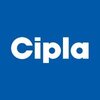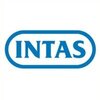Filter interviews by
Piramal Group Management Trainee Interview Questions, Process, and Tips
Piramal Group Management Trainee Interview Experiences
1 interview found
Interview Questionnaire
9 Questions
- Q1. Describe Porter's model
- Ans.
Porter's model is a framework for analyzing the competitive forces in an industry.
Porter's model, also known as Porter's Five Forces, was developed by Michael Porter in 1979.
It helps identify the attractiveness and profitability of an industry by analyzing five competitive forces: threat of new entrants, bargaining power of buyers, bargaining power of suppliers, threat of substitute products or services, and intensity ...
- Q2. Prove the divisibility rule of 3
- Ans.
The divisibility rule of 3 states that a number is divisible by 3 if the sum of its digits is divisible by 3.
To prove the divisibility rule of 3, we need to show that any number that satisfies the rule is indeed divisible by 3.
The rule states that if the sum of the digits of a number is divisible by 3, then the number itself is divisible by 3.
For example, let's take the number 123. The sum of its digits is 1 + 2 + 3 = ...
- Q3. How do you calculate the ROI to gauge the success of your training program
- Ans.
ROI can be calculated by dividing the net profit from the training program by the total cost of the program and multiplying by 100.
Calculate the net profit by subtracting the total cost of the program from the revenue generated as a result of the training.
Divide the net profit by the total cost of the program.
Multiply the result by 100 to get the ROI percentage.
For example, if the training program cost $10,000 and gene...
- Q4. Are you popular in your college? If yes, how will will you prove you popularity?
- Q5. Apply Porter's model in comparing your B-School wrt to other B-Schools
- Ans.
Porter's model can be applied to compare B-Schools based on factors like competitive rivalry, bargaining power of students, threat of new entrants, etc.
Competitive rivalry: Analyze the intensity of competition among B-Schools in terms of rankings, faculty, curriculum, etc.
Bargaining power of students: Evaluate the influence students have in terms of fees, scholarships, placement opportunities, etc.
Threat of new entrant...
- Q6. Who is your best friend? If I send you outside this room and call her inside, what are the three qualities she will tell about you to me?
- Q7. I found you very adamant. How will you work in a plant?
- Q8. Convince me for two whole minutes on why should I hire you?
- Q9. I request you to go out. Your interview is done and I am not happy with you
Interview Preparation Tips
Experience: My stress interview was the last one in the series of 2 interviews I had earlier at Piramal Enterprises Limited. I had applied for the post of HR Trainee. As you can see my Stress interview had questions ranging from every domain and acquired knowledge of any subject till date. The interviewer made me sit in one corner and he was sitting the diagonally opposite corner to me. Throughout the interview he appeared least interested and kept on showing his displeasure on anything I answered. He tried to corner me by emphasizing that I am nervous or at times he called me adamant. I maintained my calm through the entire stretch of 45 minutes interview. In the end, during the time of results he appreciated me for staying calm and maintaining the eye contact with him through out. He was happy with my confidence.
Tips: Be positive.
Do your company research thoroughly.
College Name: KJ SOMAIYA INSTITUTE OF MANAGEMENT STUDIES AND RESEARCH
Top trending discussions






Interview questions from similar companies

I applied via Walk-in and was interviewed in Aug 2023. There were 2 interview rounds.
(4 Questions)
- Q1. What ever I was mentioning in my resume from toward the questions
- Q2. Explain about UV, IR, KF, polarimeter with principle and functions
- Ans.
UV, IR, KF, and polarimeter are analytical instruments used for different types of analysis based on principles of light absorption, emission, and rotation.
UV (Ultraviolet) spectrophotometer measures the absorption of ultraviolet light by a sample to determine its concentration or purity.
IR (Infrared) spectrophotometer measures the absorption of infrared light by a sample to identify functional groups in organic compou...
- Q3. Calibration of analytical balance
- Ans.
Calibration of analytical balance is essential for accurate measurements in analytical chemistry.
Calibration involves comparing the readings of the balance to known weights.
Regular calibration ensures accuracy and reliability of measurements.
Adjustments may be needed if the balance readings deviate from the known weights.
Calibration should be done using a proper calibration weight and following manufacturer's instructi...
- Q4. What is the range of PH and explain about calibration
- Ans.
PH range is 0-14. Calibration ensures accuracy by adjusting the PH meter to known standards.
PH range is from 0 to 14, with 7 being neutral
Acidic solutions have a PH below 7, while alkaline solutions have a PH above 7
Calibration involves adjusting the PH meter using buffer solutions of known PH values
Regular calibration ensures accurate PH measurements
(1 Question)
- Q1. Waiting for HR round
Interview Preparation Tips

Analyst Interview Questions & Answers
Akums Drugs & Pharmaceuticals Limitedposted on 1 Jul 2021
I applied via Walk-in and was interviewed in Jun 2021. There were 4 interview rounds.
Interview Questionnaire
2 Questions
- Q1. What do you mean by friablity.
- Q2. Friability is the condition of being friable.It is a type of testing which is used to test the durability of tablets.
Interview Preparation Tips

Analyst Interview Questions & Answers
Akums Drugs & Pharmaceuticals Limitedposted on 11 Apr 2024
(1 Question)
- Q1. Introduction and your profile related questions
Interview Preparation Tips

I applied via Walk-in and was interviewed in Sep 2021. There were 3 interview rounds.
Interview Questionnaire
2 Questions
- Q1. Explain me what is u project
- Q2. Explained About my project
Interview Preparation Tips

(5 Questions)
- Q1. ICH guidline of pharma
- Q2. Self goal with company goal
- Ans.
Aligning personal goals with company goals to drive mutual success
Setting personal goals that contribute to achieving company objectives
Regularly reviewing progress towards both personal and company goals
Seeking opportunities to align individual strengths with organizational needs
Collaborating with team members to ensure collective efforts support company mission
Celebrating achievements that benefit both personal growt
- Q3. Industrial visit experience
- Ans.
Visited a manufacturing plant to observe production processes and learn about industry practices.
Learned about the different stages of production
Observed how raw materials are transformed into finished products
Interacted with industry professionals to gain insights into the manufacturing sector
- Q4. Family back ground and native information
- Q5. Hobbies and passion
Interview Preparation Tips

(1 Question)
- Q1. Self introduction

(2 Questions)
- Q1. Why do you want to join this company? and this role?
- Q2. Why do you want this role?
Interview Preparation Tips

(1 Question)
- Q1. Analytics importance

I applied via Company Website and was interviewed in Sep 2024. There was 1 interview round.
(4 Questions)
- Q1. What is mean by chromatography
- Ans.
Chromatography is a technique used to separate and analyze mixtures of chemicals based on their properties.
Chromatography involves passing a mixture through a stationary phase, which separates the components based on their interactions with the stationary phase and mobile phase.
Different types of chromatography include gas chromatography, liquid chromatography, and thin-layer chromatography.
It is widely used in various...
- Q2. Ir spectroscopy
- Q3. Whatis mean by analysis
- Ans.
Analysis is the process of examining data or information to uncover insights, patterns, and trends.
Analysis involves breaking down complex information into smaller components for better understanding.
It helps in making informed decisions based on the findings.
Examples include financial analysis to assess company performance, data analysis to identify trends in customer behavior, and market analysis to understand indust
- Q4. About phvalues phmeters
Skills evaluated in this interview
Piramal Group Interview FAQs
Tell us how to improve this page.
Piramal Group Interviews By Designations
- Piramal Group Sales Officer Interview Questions
- Piramal Group General Manager Interview Questions
- Piramal Group Senior Relationship Manager Interview Questions
- Piramal Group Analyst Interview Questions
- Piramal Group Area Sales Executive Interview Questions
- Piramal Group Data Analyst Interview Questions
- Piramal Group Senior Research Associate Interview Questions
- Piramal Group Software Engineer Interview Questions
- Show more
Interview Questions for Popular Designations
- Sales Management Trainee Interview Questions
- Management Trainee Marketing Interview Questions
- Product Management Trainee Interview Questions
- Management Staff Interview Questions
- Construction Management Interview Questions
- Management Executive Interview Questions
- Management Consultant Interview Questions
- Management Trainee - Technical Interview Questions
- Show more
Interview Questions from Similar Companies
Fast track your campus placements
Piramal Group Management Trainee Reviews and Ratings
based on 3 reviews
Rating in categories
|
Sales Officer
162
salaries
| ₹1.6 L/yr - ₹6 L/yr |
|
Senior Research Associate
154
salaries
| ₹2.4 L/yr - ₹8.8 L/yr |
|
Executive
148
salaries
| ₹2 L/yr - ₹8.3 L/yr |
|
Manager
116
salaries
| ₹6.5 L/yr - ₹24 L/yr |
|
Area Business Manager
87
salaries
| ₹7.1 L/yr - ₹19.1 L/yr |

Cipla

Dr. Reddy's

Lupin

Zydus Lifesciences
- Home >
- Interviews >
- Piramal Group Interview Questions >
- Piramal Group Management Trainee Interview Questions
















